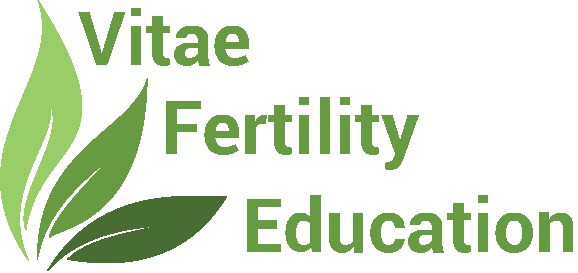The Marquette Method or FEMM? An Expert Weighs In

By Bethany Smith, RN, MA
Marquette Method Instructor and FEMM Instructor
I know you’re just trying to make the right choice about which natural family planning (NFP) method to use.
I’m a master’s prepared Registered Nurse who is trained as an instructor for both the Marquette Method of NFP and Fertility Education and Medical Management (FEMM). I teach the Marquette Method of NFP through Vitae Fertility Education and FEMM online via my own company.
I think both methods are great. Each has its strengths! My goal with this article is to provide a helpful, honest, expert comparison of Marquette and FEMM to empower you to make an informed decision about which NFP might work best for you.

The main difference: Which fertility signs each method tracks
For both FEMM and Marquette (as with any form of NFP) ovulation is the main event.
Both methods work by teaching women how to identify the fertile window—the days in their cycle when they are most fertile. How each method identifies the fertile window is what makes them different.
The FEMM method teaches women how to observe and track their cervical mucus secretions throughout the day and throughout their cycle. Additionally, unlike other cervical mucus based methods (like Creighton and Billings) FEMM also incorporates urinary luteinizing hormone (LH) testing to identify the LH surge in your cycle.
The Marquette Method uses the Clearblue Fertility Monitor. The benefit of the monitor is that it tracks both estrogen levels and LH levels directly, so you don’t have to track mucus. (Marquette has an optional cervical mucus protocol which can be used alongside or instead of using the monitor.)
Which Fertile Signs Do the Marquette Method and FEMM Track?
A comparsion chart
Optional
Clearblue monitor or LH test sticks
Clearblue monitor
Optional
(Proov test sticks)
Optional
LH test sticks
What’s it like to use Marquette or FEMM, day to day?
A day in the life of using Marquette means performing a daily urine test. The test stick is dipped in urine and placed in the Clearblue fertility monitor. Then, you take the fertility reading that is displayed on the monitor and write on your chart the corresponding letter of “L” for low, “H” for high, and “P” for peak.
The fertility reading is used in combination with an algorithm and a protocol (set of “rules”) which depends on your specific cycle description (regular cycles, breastfeeding cycles, transitional cycles, etc.) The process is straightforward, objective, and many women report that it removes a lot of the guesswork out of NFP for them.
FEMM is a low-tech method that uses three factors to teach a woman to understand her biomarkers: LH testing, cervical mucus, and education. A day in the life of using FEMM means assessing cervical mucus observations each day after voiding and at night. LH test strips are added in on the seventh cycle day or at the point of change with estrogenic findings (when your mucus changes from dry to moist). FEMM offers a free, user-friendly customizable app that makes charting easy, provides daily feedback about your cycle, and is effortlessly shareable with providers.
Both methods encourage you to test, chart, and make decisions about whether or not to have intercourse based on your intent to achieve or avoid pregnancy.
Instructor training and credentials
Whichever method you choose, you don’t have to go alone. Both Marquette and FEMM methods offer instructor support in-person and online.
Marquette instructors are all healthcare professionals (minimally BSN-prepared Registered Nurses) who are trained by the Marquette Institute for NFP in their online training program. Many Marquette Method Instructors (including all the Vitae Fertility Instructors) are also certified by the Marquette Method Professionals Association.
FEMM teachers receive online instruction for certification training in collaboration with the Reproductive Health Research Institute.
Both methods have instructors who can advocate for women by providing reproductive education, supporting fertility goals, and collaborating with NFP-aware providers. One benefit of working with an instructor is the ability to receive education tailored to your specific situation.
How long does it take to learn?
Both methods will take time upfront to learn and implement the instructions.
FEMM education is provided in three sessions each lasting roughly one hour each.
- In the first session, you will learn how hormones influence your health and how to chart your hormonal activity.
- In the second session, you learn to identify healthy patterns or health problems.
- In the third session, you learn how to manage your fertility through family planning.
The initial session for Marquette with Vitae Fertility Education takes about one hour and covers anatomy and physiology, effectiveness rates, how to use the Clearblue Fertility Monitor for NFP, Marquette protocols tailored to your situation, and how to chart with the method.
Both methods offer ongoing support as needed. Vitae Fertility’s Marquette Method Packages include unlimited follow-up sessions for a year, with an option to renew.
Startup and Ongoing Cost of Using Marquette or FEMM
Next, let’s talk money.
Marquette and FEMM instructors all set their own rates, so the costs of instruction vary.
With Marquette, the monitor is an upfront cost while the Clearblue test sticks are an ongoing cost. Because the number of test sticks you’ll need on an ongoing basis varies depending on the length of your cycles and the fertile phase you’re in, we cover the costs associated with using the Marquette Method in depth in a separate article.
With FEMM, the only ongoing cost (besides instruction) is LH test strips.
How Much Does it Cost?
A comparsion chart
(see Vitae Fertility's Packages and Pricing)
How much abstinence is required?
FEMM family planning instructions are dependent upon the ability to identify the ovulatory phase. No genital contact is recommended in the first cycle of charting to allow you to gain confidence in assessing cervical mucus. In the second cycle of charting, you can have intercourse on the evening of alternate dry days, pre- and post-ovulation. Apart from confusing or concerning cycles, more days become available for intercourse after the second cycle.
With the Marquette Method couples are able to resume intimacy at the end of the fertile window in the first cycle. On days that are available, intercourse can occur at any time of the day—there is no need to wait until the end of the day as is common with mucus-based methods. Marquette also does not require every-other-day rules—because the monitor tracks hormone levels directly (through urine tests) rather than symptomatically (through mucus checks.)
There are times abstinence is going to be hard. Whatever method of NFP you choose, it is essential to have ongoing communication and care.
Effectiveness rates
Another concern many couples have when choosing a method is wanting to know if it is really going to work. I hear you!
Similar to Marquette, FEMM uses evidence-based approaches to help women with underlying hormone imbalances manage their cycles. There are no published effectiveness rates for avoiding pregnancy using the FEMM Method, but it is known that adding urinary tracking to mucus observations provides the user with more clarity as to when ovulation happens in her cycle (Fehring, Schneider, Raviele & Barron 2007).
Marquette has undertaken a series of effectiveness studies with different cohorts of women. Here are the Marquette Method effectiveness rates for women in different fertile stages:
- Marquette’s effectiveness rates for women in regular cycles – 98.4% effective in perfect use, 98% effective in typical use (Fehring & Schneider, 2017)
- Breastfeeding women – 98% effective in perfect use, 92% effective in typical use (Bouchard, Fehring, & Schneider 2013).
We’ve also published an extensive blog post on understanding NFP effectiveness rates, so I encourage you to read that to put these numbers into context!
Main Differences Between the Marquette Method & FEMM
A summary comparsion chart
(Fehring & Schneider, 2017)
(Bouchard, Fehring, & Schneider, 2013)
Choosing the best method for you
In conclusion, let’s reflect on the season you are in.
If you’re a teenager or have a teenage daughter FEMM offers a health program for teens to understand how their bodies work and be knowledgeable of health indicators. It does not have to be one big awkward conversation that everyone dreads. It can look like a weekend retreat with other moms and daughters in similar seasons where puberty changes are normalized. It can be as basic as showing menstruation products, to having an instructor come talk to a group of young ladies, to ongoing one-on-one support.
Or maybe you find yourself reading this article while taking care of a newborn. Marquette offers a postpartum, breastfeeding-friendly protocol independent of the amount of sleep you are getting or your fluctuating temperatures. There is a plan in place from the time you deliver, through your return of fertility, back to regular cycles.
One blog post doesn’t cover it all. Whether it’s PCOS, long cycles, abnormal uterine bleeding, or short cycles, NFP instructors are here for you through it all.
From menarche through menopause, I want you to feel supported.
What questions do you still have? What concerns can we help address? I am part of a team that would be honored to help steer you in a helpful direction through a free, no-obligation NFP consultation.
Free Marquette Method Consultation
Have questions about the Marquette Method?
I’d be glad to answer any questions you have about the method or about Vitae Fertility's training packages.
Click below to start your free, no-obligation consultation with me.
